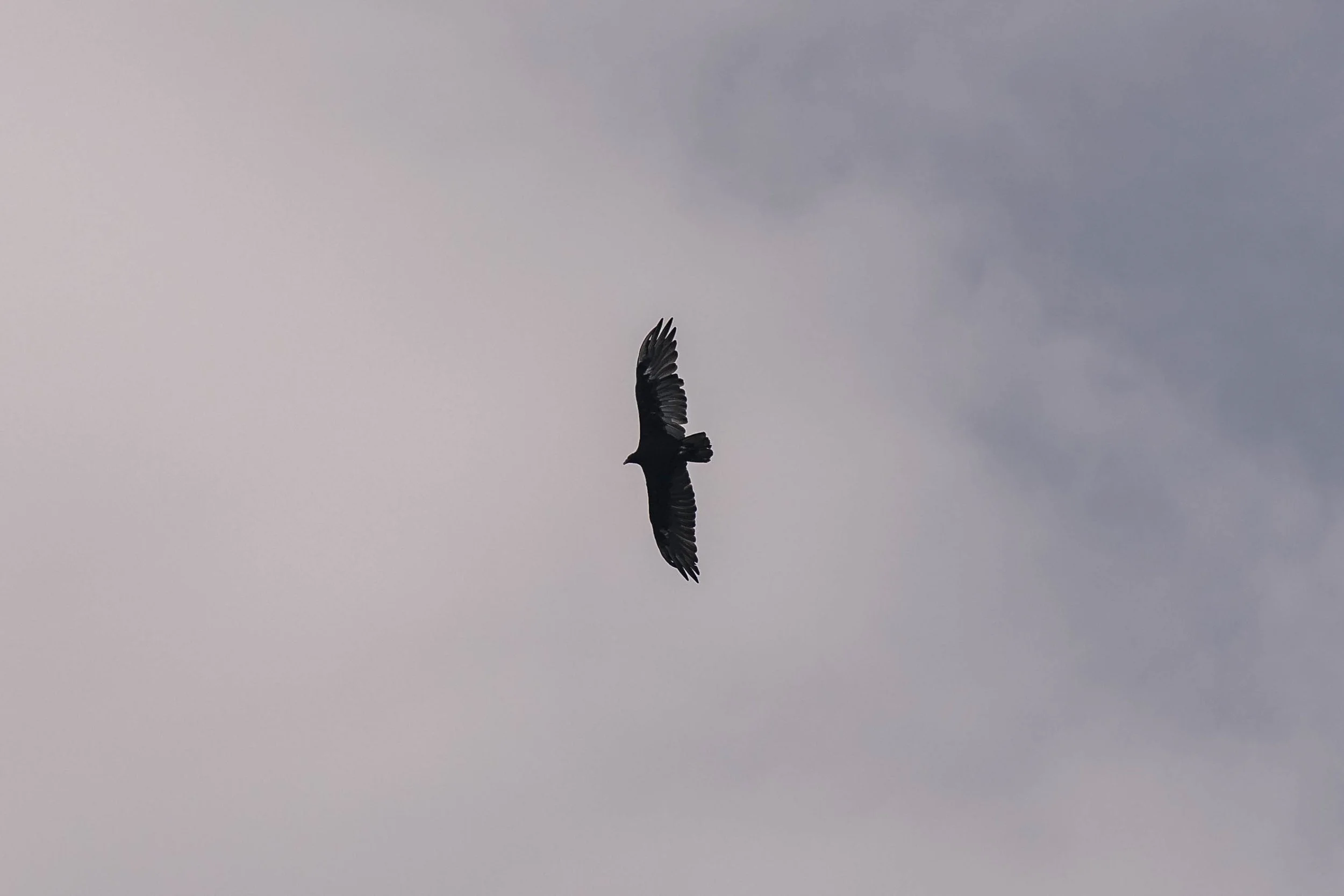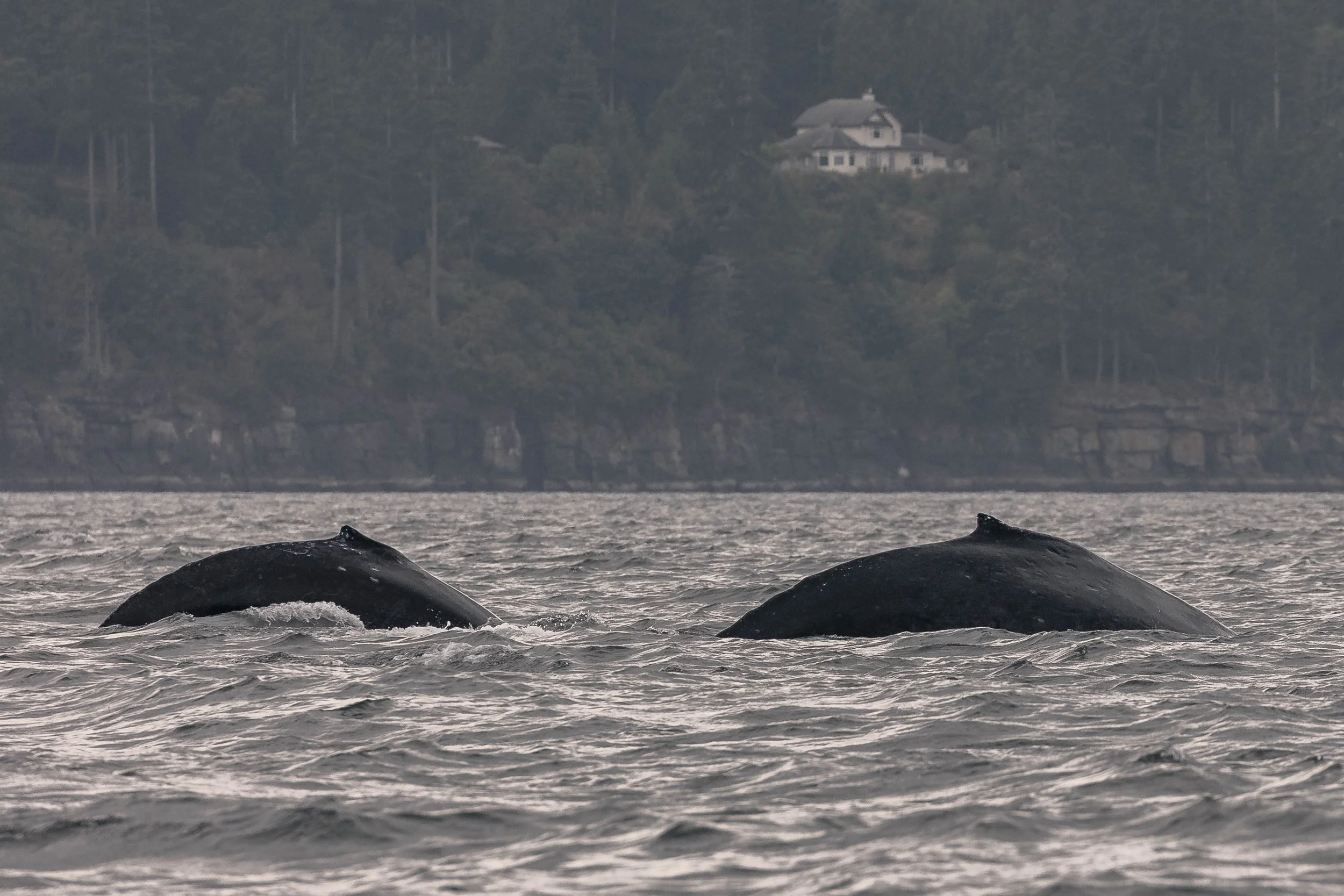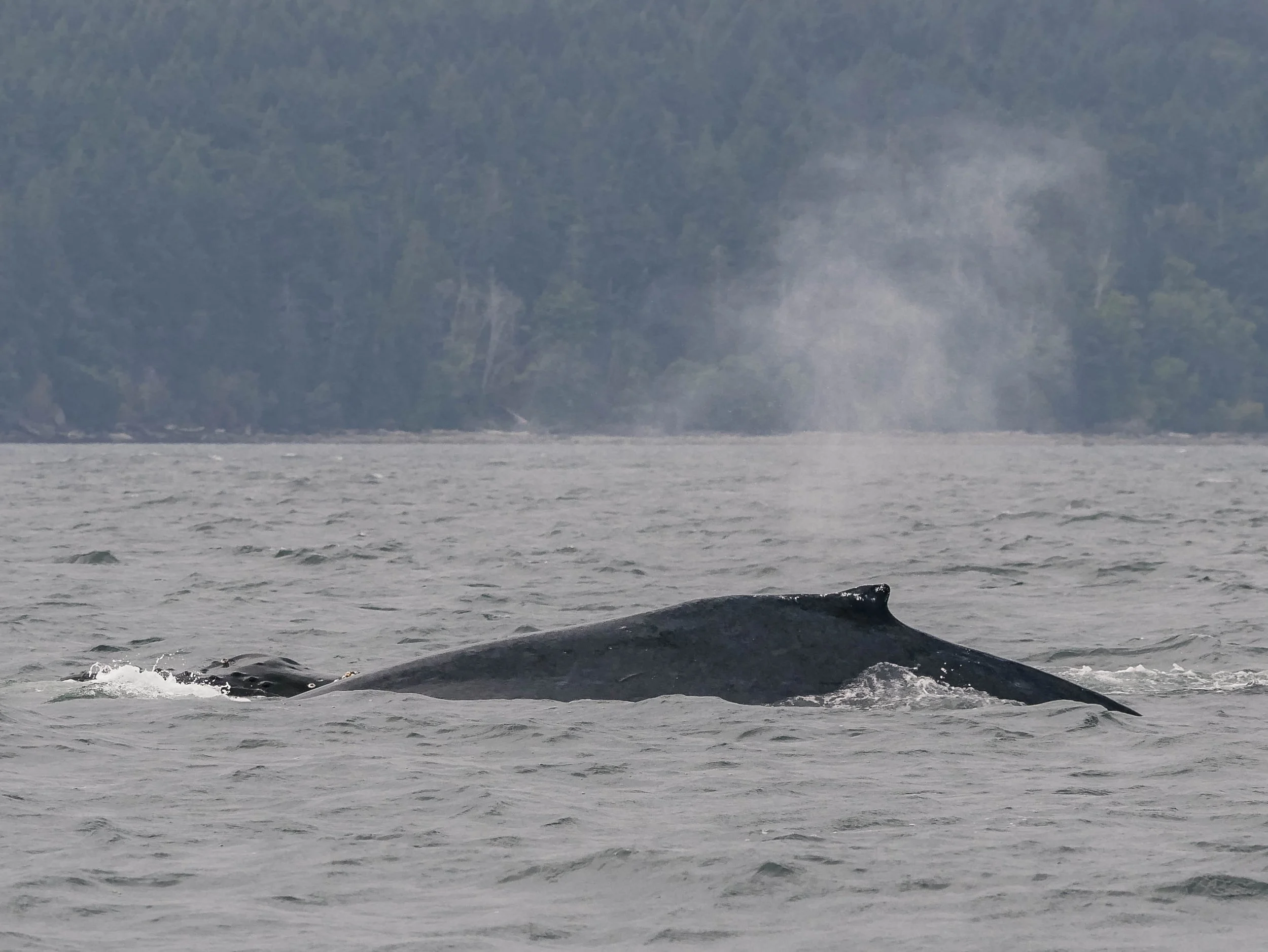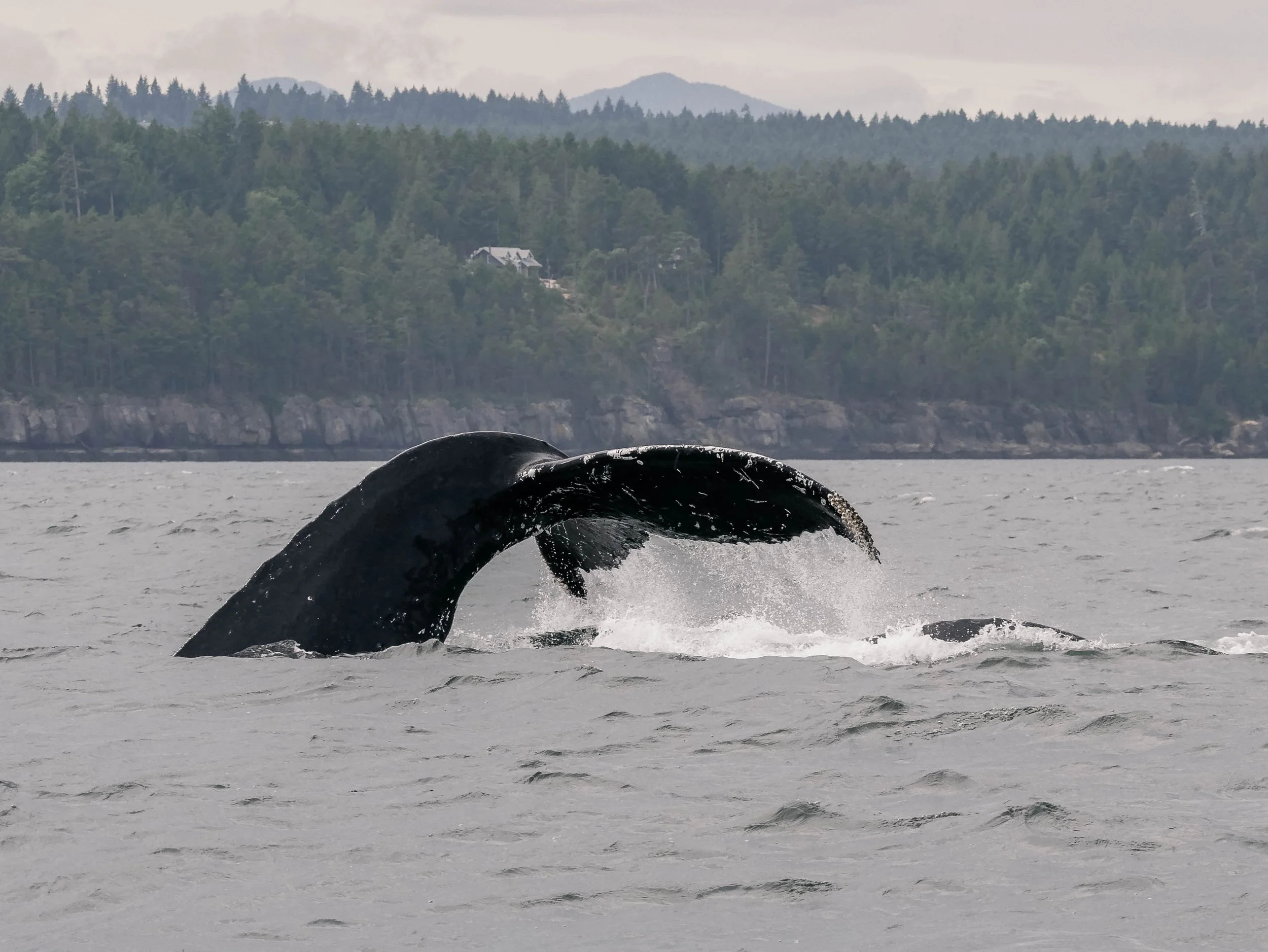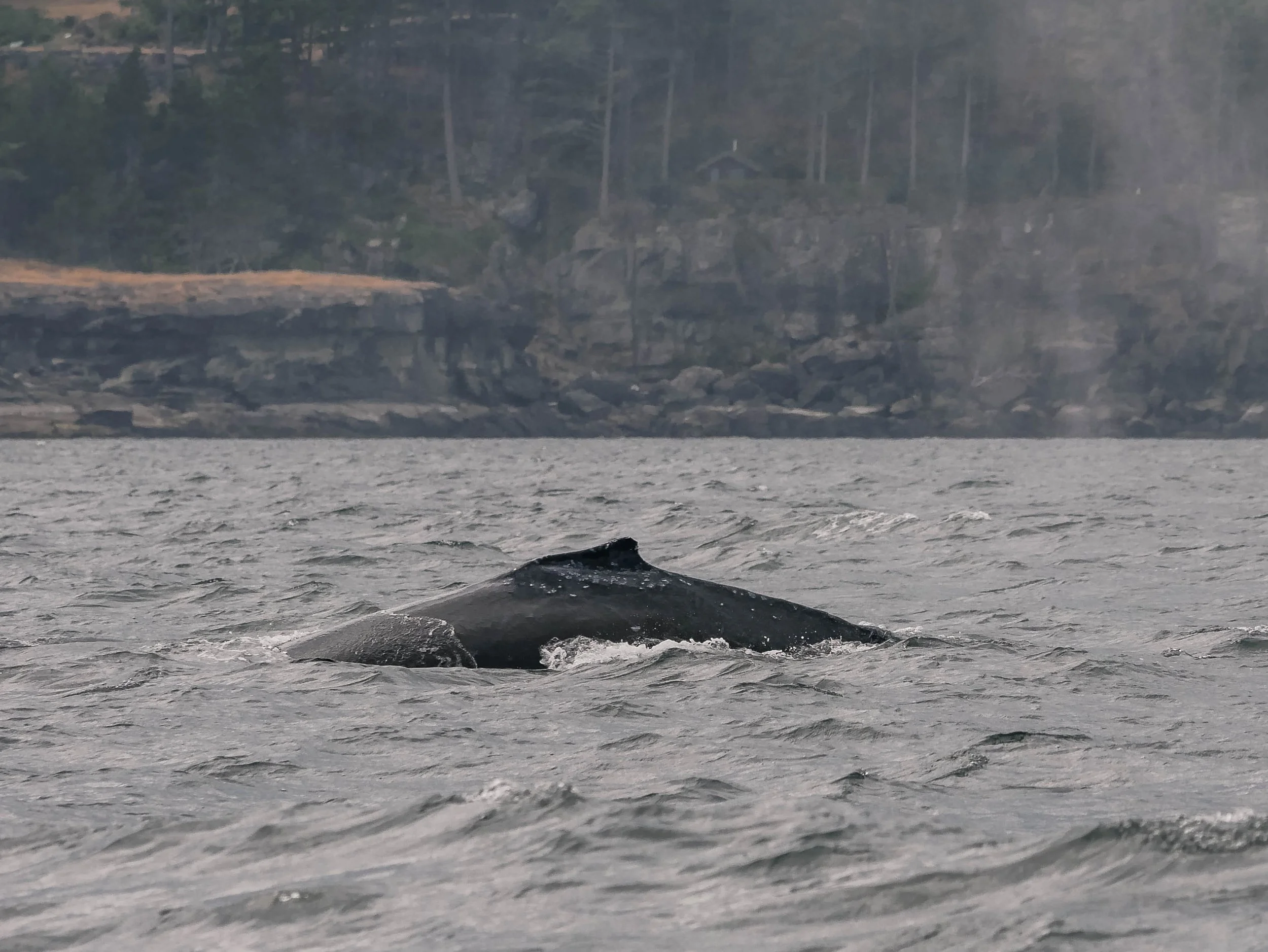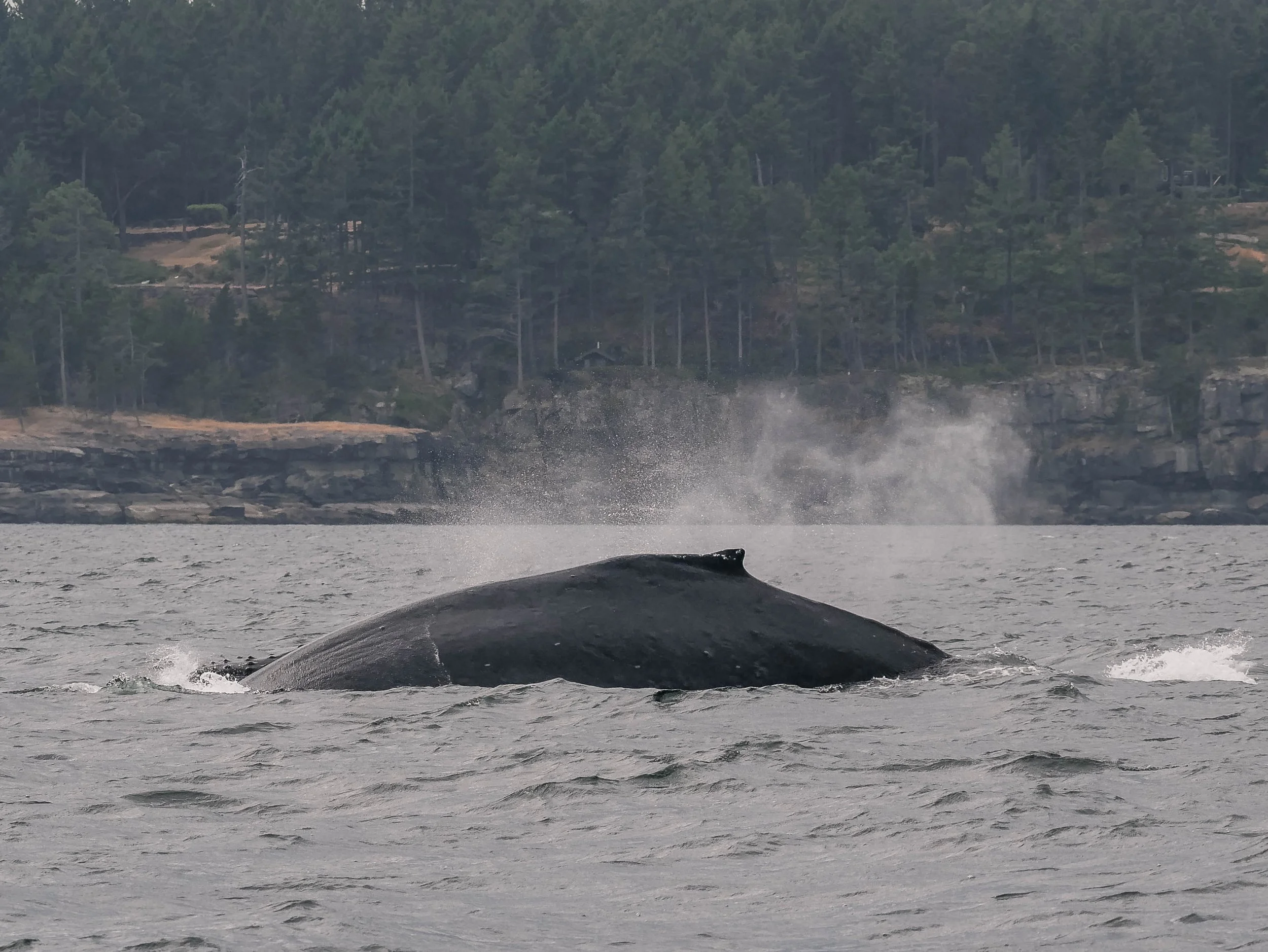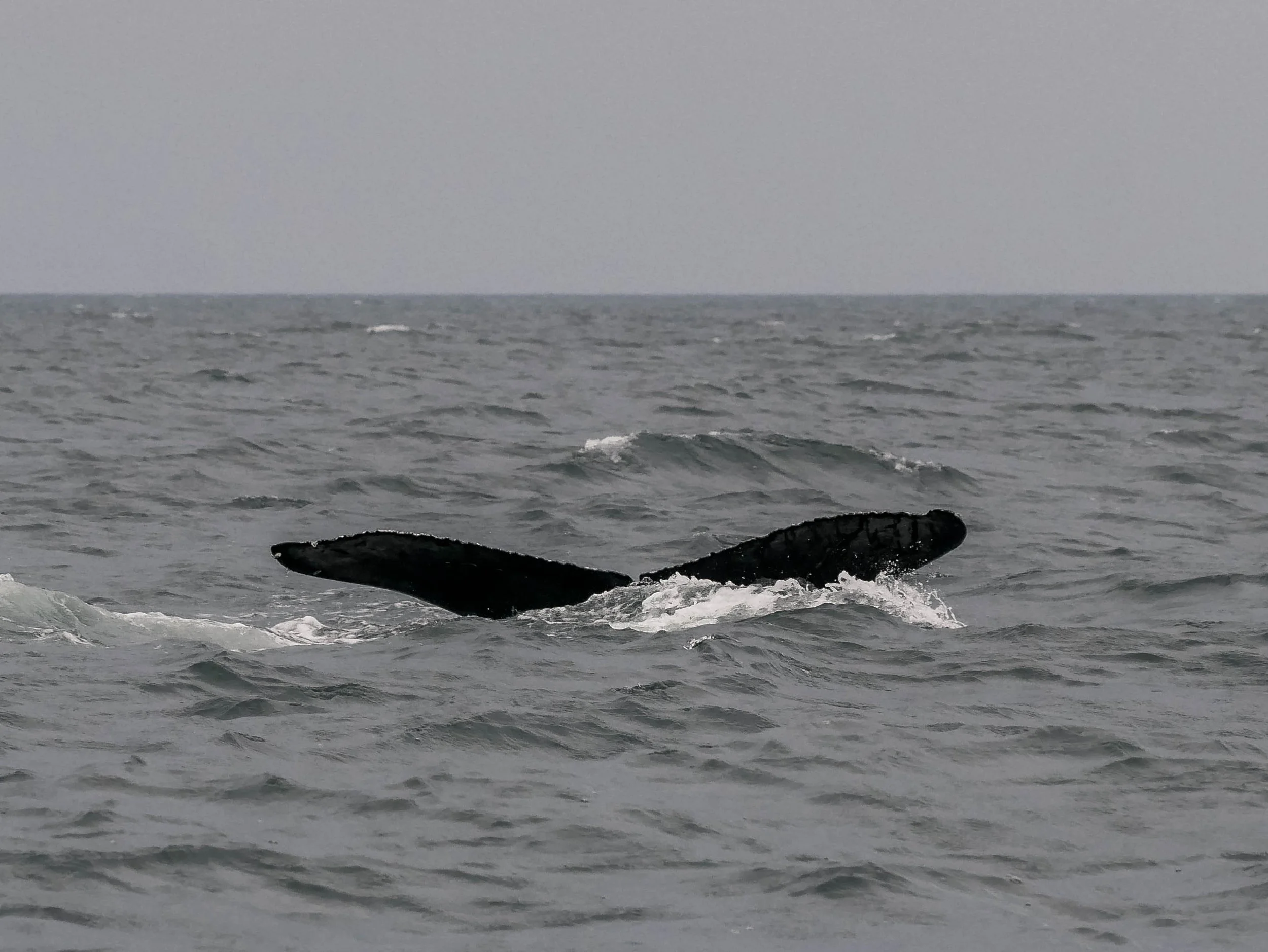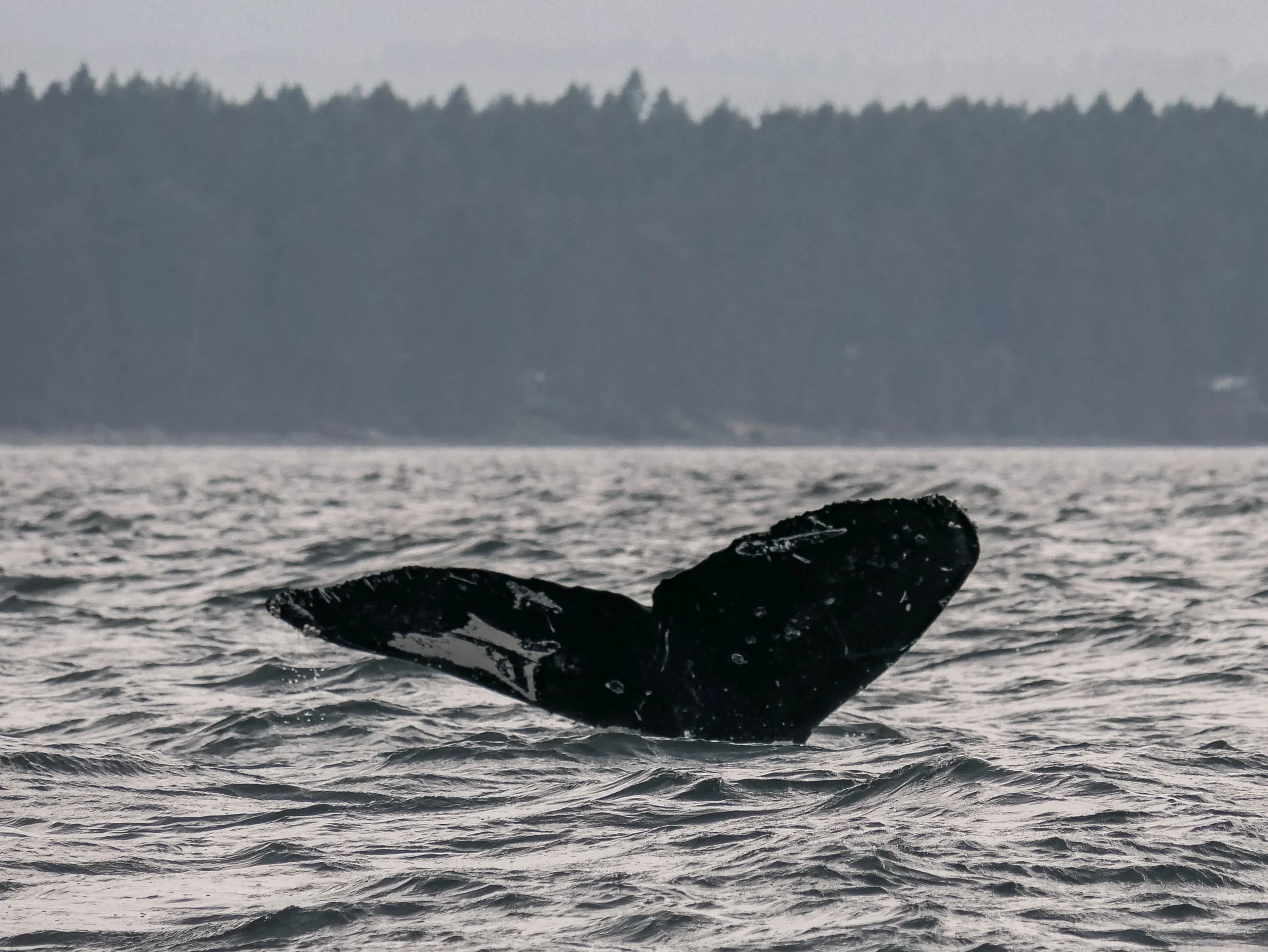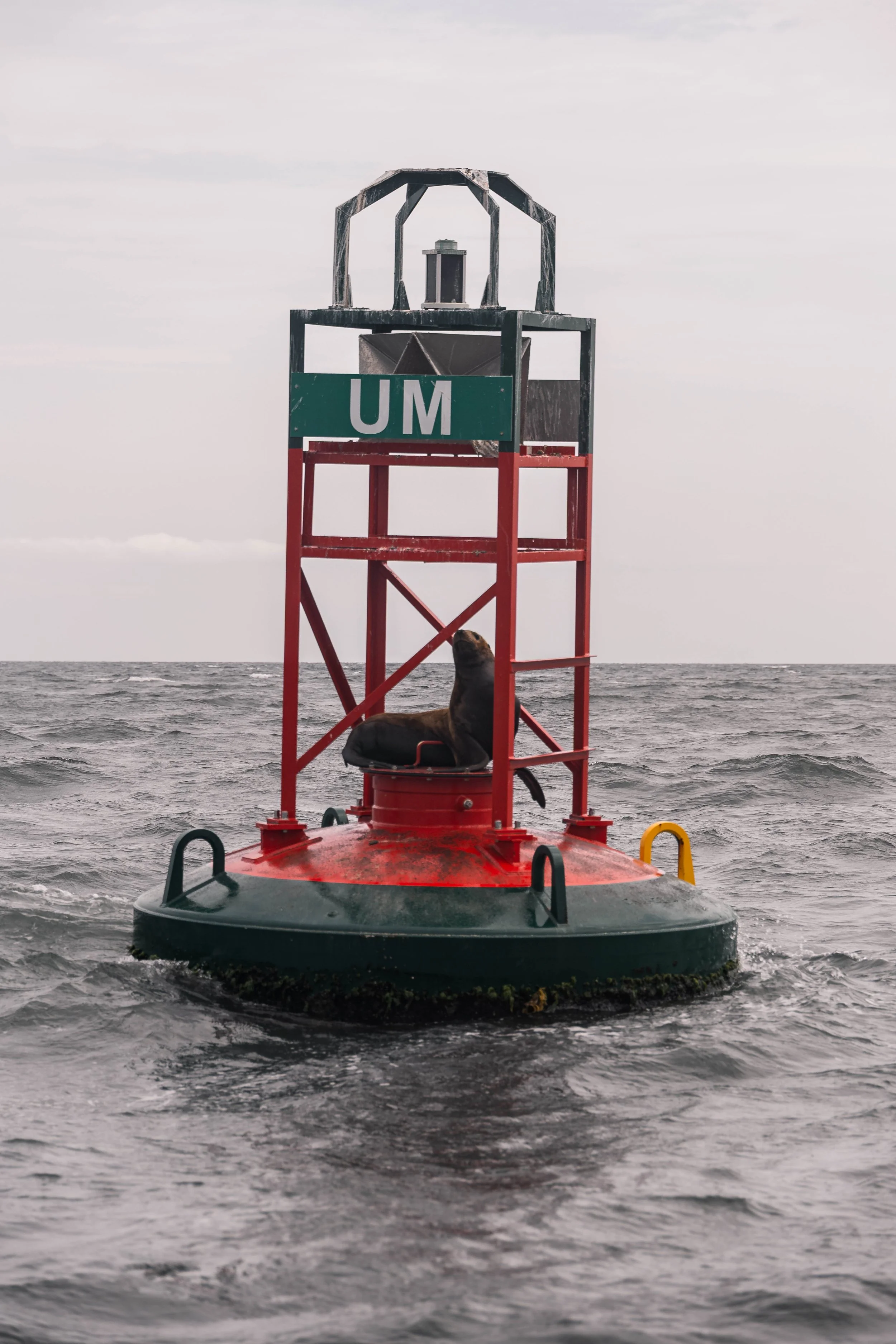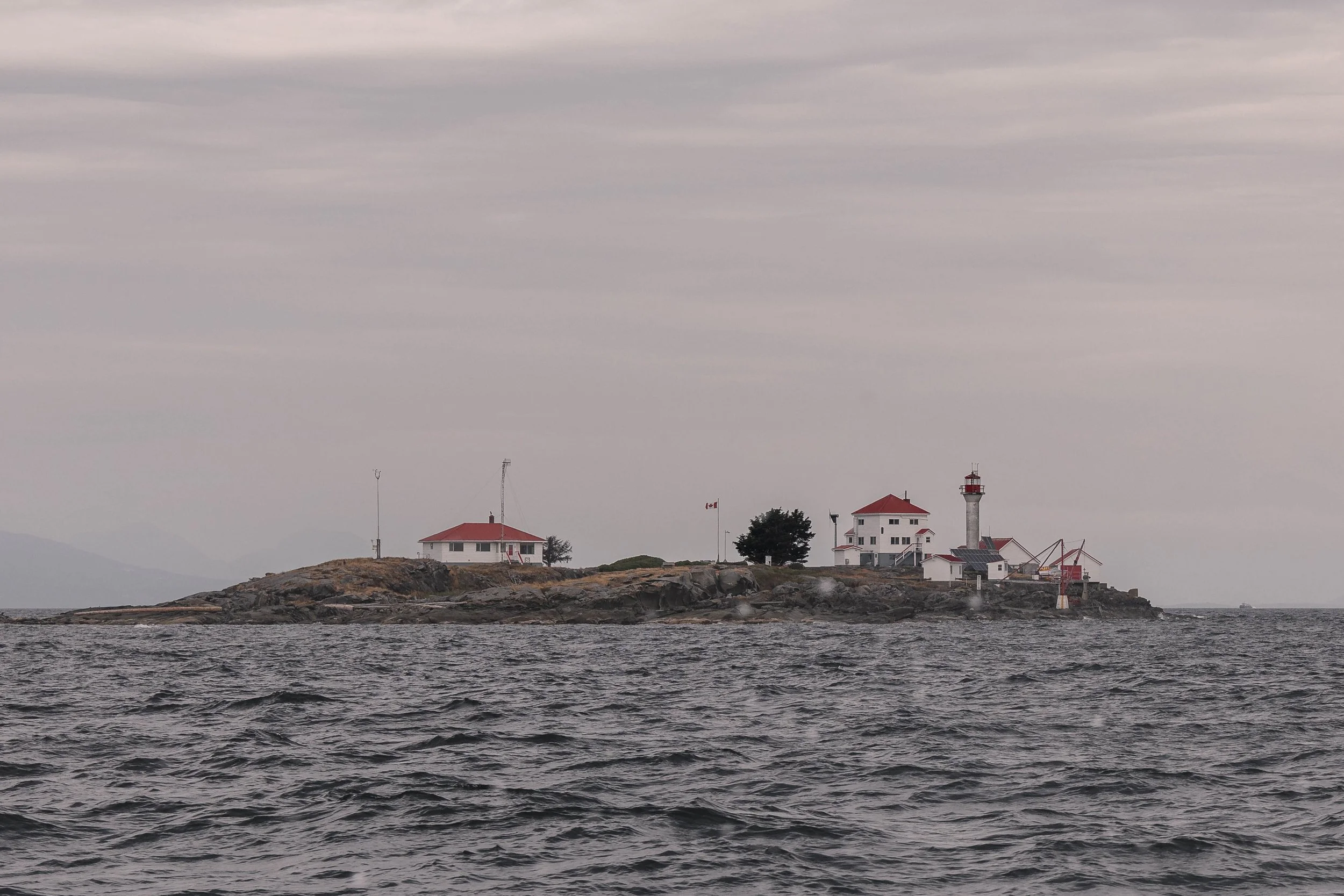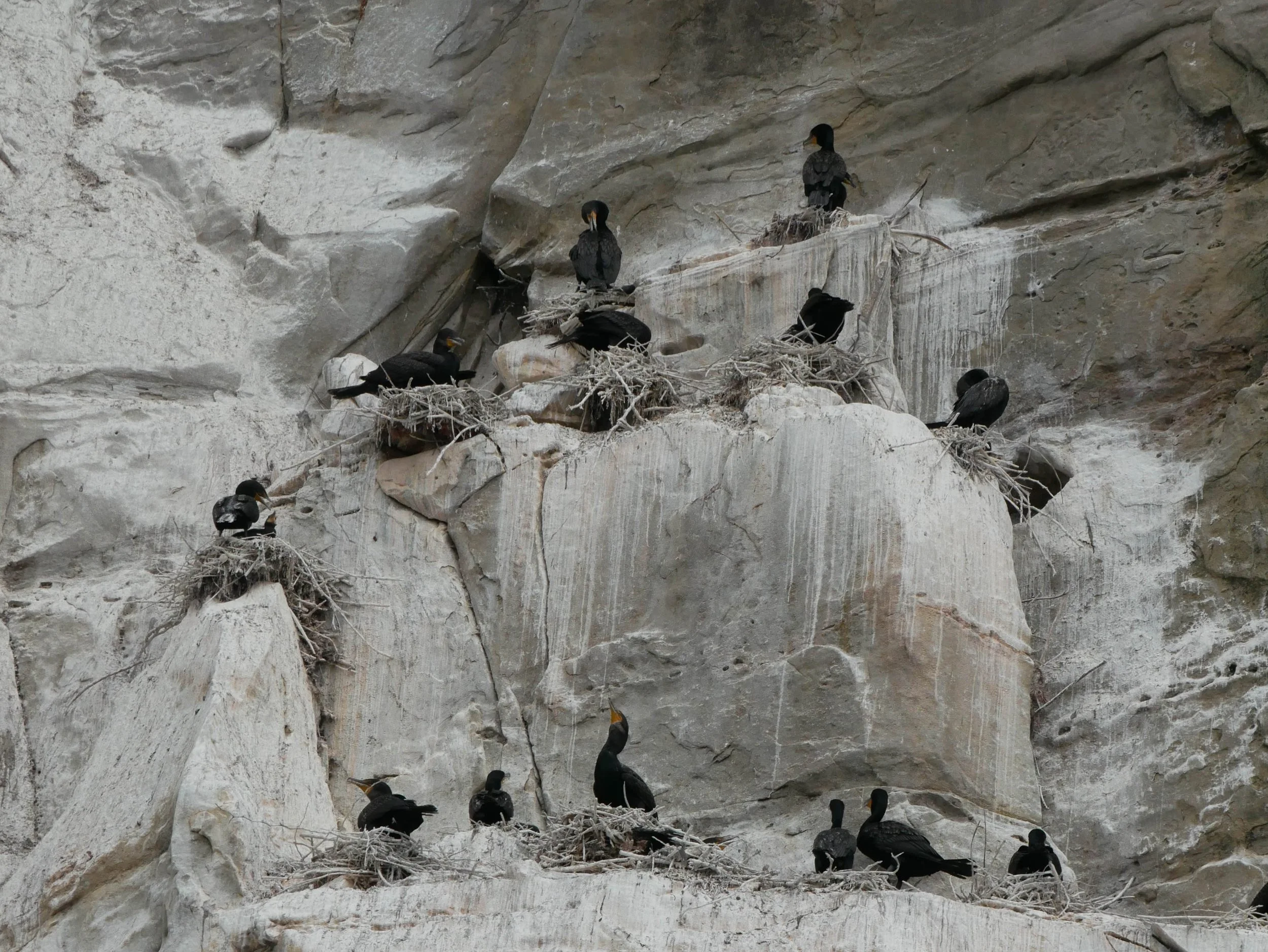August 5, 2025, 10:30 AM - Humpbacks from Hawaii in the SOG!
It was a lively morning on the water as the full fleet left the dock, eager to see what the Strait of Georgia had in store. The wind carried a bit of chop across the surface, but that didn’t stop us from scanning for blows on the horizon. Before long, Kula was the first to spot the familiar misty exhalation of a humpback whale. It was none other than Sage (BCX2073), a well-travelled visitor who made the remarkable journey between our coast and Hawaii. Not far from Sage, two more unidentified humpbacks surfaced, proof that the Strait is teeming with life this time of year.
Meanwhile, Keta had found their own special sighting, a mom and calf pair. The mother was Kappa (BCX0158), accompanied by her calf Kappiroto (BCX0158 calf 2025), both of which were recent arrivals from Hawaii. These little ones are born in the warm, sheltered waters of the breeding grounds and then make one of the longest migrations on earth, all the way here to the cool, nutrient-rich waters of British Columbia.
Not to be outdone, Cascadia discovered a trio of humpbacks, including Incognito (BCX2053) and two unknown individuals. Once again, Hawaii was the common thread; Incognito also migrates across the Pacific. Later, the fleet gathered together to witness a special meeting: another mom and calf pair, Ghost (BCX1333) with her calf BCX1333 calf 2025, had linked up with Kappa and her calf. Perhaps they recognized one another from their shared time in Hawaiian waters? It’s a thrilling reminder of how these two ocean worlds are connected.
And just when we thought the day couldn’t get any better, Kula came across Velvet (BCY1186), another Hawaiian traveller. On the way home, Keta rounded out the day with one more sighting, Squirrel/Smoke (BCX2183), again, hailing from the same tropical breeding grounds. Hawaii seemed to be the theme of the day, a reminder of just how far these animals travel, up to 6,000 kilometres, arriving here hungry and ready to feed. The rich waters of the Salish Sea provide the perfect buffet to bulk up before the long return journey south.
Of course, whales weren’t our only encounters. The rocky haul-outs along the Strait were full of Steller Sea Lions, the largest of all sea lions. With males weighing up to a ton, they are a commanding presence, their roars echoing across the water as they jostle for space.
Scattered along the shoreline, we also spotted harbour seals, the true locals of the Salish Sea. Unlike the migrating humpbacks, these seals stay here year-round. They’re well adapted to our coast, often seen hauled out on rocks or bobbing curiously in the swells.
Overhead, the sky was busy too. Turkey vultures, with their distinctive V-shaped soaring pattern, circled in search of carrion. These scavengers play an important role in the ecosystem, cleaning up what others leave behind.
Meanwhile, the cliffs and rocky ledges provided nesting spots for cormorants. These seabirds, with their slender necks and diving ability, are expert fishers. We watched them drying their wings in the breeze after their underwater hunts, a classic Salish Sea sight.
From start to finish, today’s trip was a perfect reminder of how interconnected our ocean truly is, from the warm waters of Hawaii to the cold, food-rich currents of British Columbia. Whales, birds, and marine mammals alike all have their part to play, making the Strait of Georgia one of the most vibrant marine ecosystems in the world.
Photos taken by Desarae Poier, Hayleigh Hilbert and Jordan Robinson.
A turkey vulture soaring overhead. Photo by Jordan Robinson.
Looking down at us! Photo by Desarae Poier.
Kappa with Kappiroto in tow. Photo by Desarae Poier.
A fluke waterfall! Photo by Desarae Poier.
Kappa and Kappiroto diving together. Photo by Desarae Poier.
Kappa with her calf just breaking the surface beside her. Photo by Hayleigh Hilbert.
Kappa in front with Kappiroto following. Photo by Hayleigh Hilbert.
Kappa with Kappiroto behind her. Photo by Hayleigh Hilbert.
Kappiroto’s dorsal fin. Photo by Hayleigh Hilbert.
Kappa with her baby’s rostrum poking through the waves. Photo by Hayleigh Hilbert.
Kappa diving in tandem with Kappiroto. Photo by Hayleigh Hilbert.
Kappiroto - can you spot all the barnacles? Photo by Hayleigh Hilbert.
Kappiroto with mom’s dorsal just breaking the surface. Photo by Hayleigh Hilbert.
Kappa and Kappiroto surfacing together. Photo by Hayleigh Hilbert.
Another fluke from Kappa. Photo by Hayleigh Hilbert.
Kappirito fluking. Photo by Hayleigh Hilbert.
Smoke diving. Photo by Hayleigh Hilbert.
Sage fluking. Photo by Jordan Robinson.
Kappa going down. Photo by Jordan Robinson.
Velvet fluking. Photo by Jordan Robinson.
A Steller Sea Lion resting. Photo by Jordan Robinson.
Watching us back! Photo by Jordan Robinson.
Stellers on the rocks. Photo by Desarae Poier.
Harbour seals napping. Photo by Desarae Poier.
Entrance Island. Photo by Jordan Robinson.
Cormorants at the Bluffs. Photo by Hayleigh Hilbert.
A gull fluttering past. Photo by Jordan Robinson.

